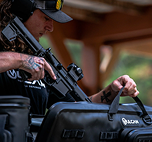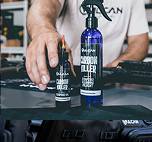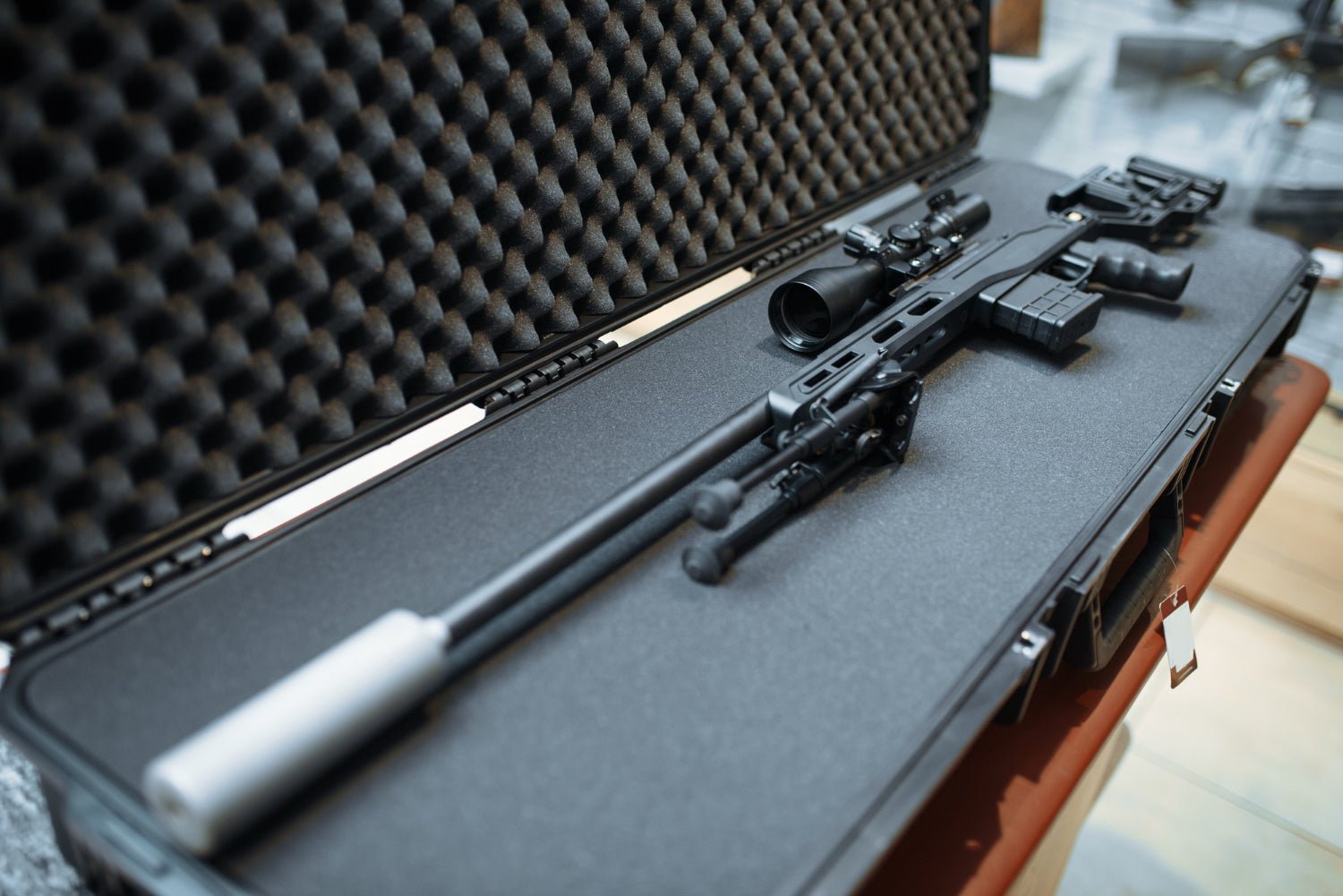Rifles go through a lot, especially if you’re bringing them outdoors, heading to the range, or traveling with them on rough terrain. It doesn’t take much water to cause damage, and over time, moisture creeping into a case can lead to some real problems like rust, corrosion, or ruined optics. That’s why checking how watertight your rifle case really is can give you peace of mind before you end up in a puddle-filled ditch on some weekend field trip. You don’t want to find out the hard way that your case leaks.
Testing the case before it’s put in serious conditions can catch weak spots early. Even if a case says it’s weather-resistant, zippers wear down, seams weaken, and pressure points crack. Give it enough time and even the strongest gear can start slipping. So instead of waiting around for an accident, it’s better to run a quick water test and feel confident knowing nothing inside will get soaked when it counts.
Understanding Water Resistance In Rifle Cases
When people hear “watertight,” they usually think of something fully sealed, like a dry box you’d take on a river trip. But not every rifle case is built that way, and that’s totally fine depending on how and where it’s used. Water resistance means the case stops water from entering under normal conditions, like light rain, splashes, or a quick set-down on damp ground. It doesn’t mean it can survive being underwater for hours.
There are a few different ways cases handle moisture:
- Some use tight stitching and thick zippers with water-resistant flaps
- Others might have interior linings that block moisture from seeping in
- Higher-end ones may come with sealing lips or roll-tops for extra protection
Each design approach handles water differently. If your case is rail-mounted or made of soft material, it may rely more on exterior barriers and flaps than hard case pressure sealing. A good way to start understanding yours is just by looking over the seams, zipper strength, and any lid overlaps. Do the zippers tuck away neatly? Does the interior seal off like a cooler lid, or does it shift around easily?
Take a soft sided case that’s been on a few hunts. After enough wear, dirt and water can get into the zipper track, making it hard to fully close. That might not seem like a big deal, but water only needs a small gap and some time. Knowing exactly how protected your firearm is starts with knowing what level of water resistance your case offers.
Preparing For The Test
Before jumping straight into a test, it’s smart to have a plan so things stay controlled and clean. You’re testing how well your rifle case holds up, not how well your actual rifle can take on water. So make sure the case is empty first and give it a quick brush down to get rid of any loose debris or dirt.
Here’s a simple checklist to prep everything:
1. Empty the case completely and remove all accessories
2. Wipe it down outside and inside to ensure clean testing
3. Grab a few dry towels or old shirts to place inside as test fillers
4. Prepare clean water in a spray bottle, bucket, or hose (low pressure)
5. Set the case on a slightly raised platform, such as a crate or picnic table
6. Avoid testing over dirt or grass that can splash mud
If the case has any weak areas, you'll want something inside it that helps reveal leaks clearly. That’s why dry paper towel rolls or cotton t-shirts are often used. They're easy to check for damp spots, and since they’re absorbent, you can tell exactly where water may have slipped through.
Don't do the test close to electronics, wooden floors, or carpets. A flat patio, garage, or even the driveway works better. You want an area where stray water won't do harm and where you can easily see leakage trails. Once you’re set up, you’ll be ready to put the case to the test and spot any issues fast without making a mess.
Step-By-Step Guide to Testing Water Resistance
Now that you’ve set the stage for testing, it’s time to see how your rifle case holds up against water. These steps will walk you through the process to ensure a clear and effective assessment.
1. Initial Inspection: Check the case for any visible wear and tear. Make sure zippers and seams aren’t damaged, as these are common weak spots.
2. Insert Test Fillers: Place your dry towels or shirts inside the case. This will help you identify water leaks more easily, as any moisture absorbed by these items indicates a problem.
3. Simulate Rain Exposure: Using the spray bottle or hose, gently spray water over the entire case for about 5 to 10 minutes. Focus on seams, zippers, and other joints. You want to mimic light rain or splashes rather than a deluge.
4. Observe for Leaks: Open the case carefully, checking the towels or shirts for damp spots. If water got in, note where it entered. This information will help address specific problem areas.
5. Perform a Second Test If Necessary: If you find leaks, dry the case completely and repeat the process to confirm the points of entry. This minimizes chances of a false positive due to user error.
Throughout the test, also pay attention to how the case material reacts. Hard cases may have different stress points compared to softer materials, and these details are vital for getting accurate results.
Post-Test Evaluation and Maintenance
Once you’ve completed the testing, it’s time to evaluate the results. If there were no leaks, your case is in good shape and ready for use in light weather conditions. However, if water seeped in, consider these steps to maintain or improve your case’s resistance.
- Patch Visible Leaks: Use waterproof sealants or tape to temporarily address small holes or thin spots along seams
- Condition the Zippers: Applying a bit of waterproof lubricant can keep zippers smoother and less prone to leaks
- Reinforce Seams: If seams show signs of wear, consider getting them professionally reinforced to ensure long-term integrity
Regular care will help your rifle case last longer and stay more water-resistant. Yet if the leaks persist despite your best efforts, it’s probably time to think about upgrading to a more reliable case. You want something that’s actually watertight when it matters, not just labeled that way.
Keep Your Rifle Safe and Dry
A watertight case isn’t just a smart piece of gear, it’s peace of mind. Whether you’re camping, taking your rifle to the range, or storing it overnight in your truck, testing that case from time to time just makes sense.
By staying on top of your rifle case’s condition, you avoid surprise damage, costly repairs, and unnecessary rust. It’s one of the easiest habits to build into your regular firearm care and doesn’t even take much time. A case that holds up to the elements protects your equipment and your investment.
Trust your gear, but test it too. That’s how you make sure your rifle stays dry no matter what weather rolls in.
Protecting your rifle from the elements can safeguard its longevity and performance. Whether you're planning a trip to the range, exploring the outdoors, or dealing with unexpected weather, this step ensures peace of mind. If you haven't already checked out a robust solution to keep your rifle dry, consider a watertight case for a rifle. VULCAN Arms offers reliable options built to handle the harshest conditions while keeping your firearm protected.









Share:
Adjusting Magnetic Gun Mounts for Heavy Firearms
Storing Your AR During Humid Weather